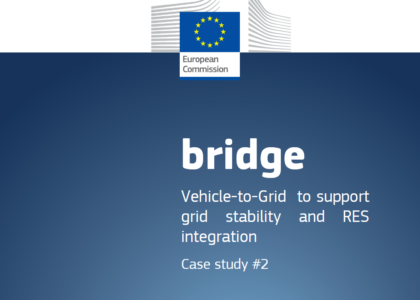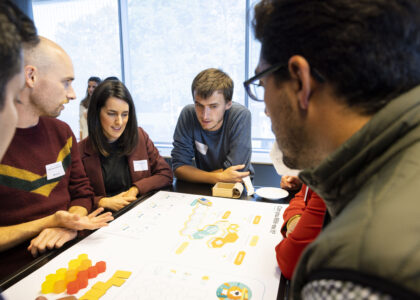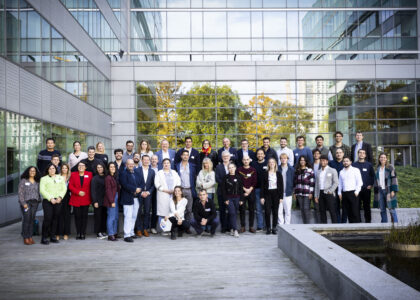by Nikolas Giampaolo, dissemination team at Deep Blue Italy
Are innovative local energy communities a potential option for airports? Can small and medium-sized airports participate in innovative energy communities or become critical actors in supporting the growing field of local energy communities?
In this article we explore the underestimated potential of transport hubs as initiators of the European energy transition. The war in Ukraine and the energy crisis are undermining models based on energy interdependence, and making local and sustainable energy production models more attractive, both for private consumption and for powering critical infrastructures of national interest. Moreover, the soaring cost of fuel is putting further pressure on the aviation sector, already heavily affected by the Covid-19 pandemic. The result is the decrease in flights and the increase in passenger ticket costs. Furthermore, the closure of airspace due to the geopolitical situation is further raising the costs of air routes, especially for intercontinental ones. Airline and ATM operators and operators are therefore facing a new challenge and making strategic decisions is essential.
The Renaissance project is an Horizon 2020 Innovation Action (IA) started in October 2019 and led by the Vrije Universiteit Brussels which aim is to deliver a community-driven scalable and replicable approach, to implement new business models and technologies supporting clean production and shared distribution of energy in local communities. Deep Blue is contributing to the research supporting customer engagement and social acceptance of Energy Communities at large. The project is developing a comprehensive benchmarking model, to significantly improve the uptake of local Energy Communities and likely reduce consumer costs. In the four European pilot sites in The Netherlands, Greece, Belgium, and Spain, the combination of novel micro-grid design and management tools with existing energy generation and storage technologies, has allowed the identification of business cases and subsequent operational solutions that maximize value capturing and self-consumption.
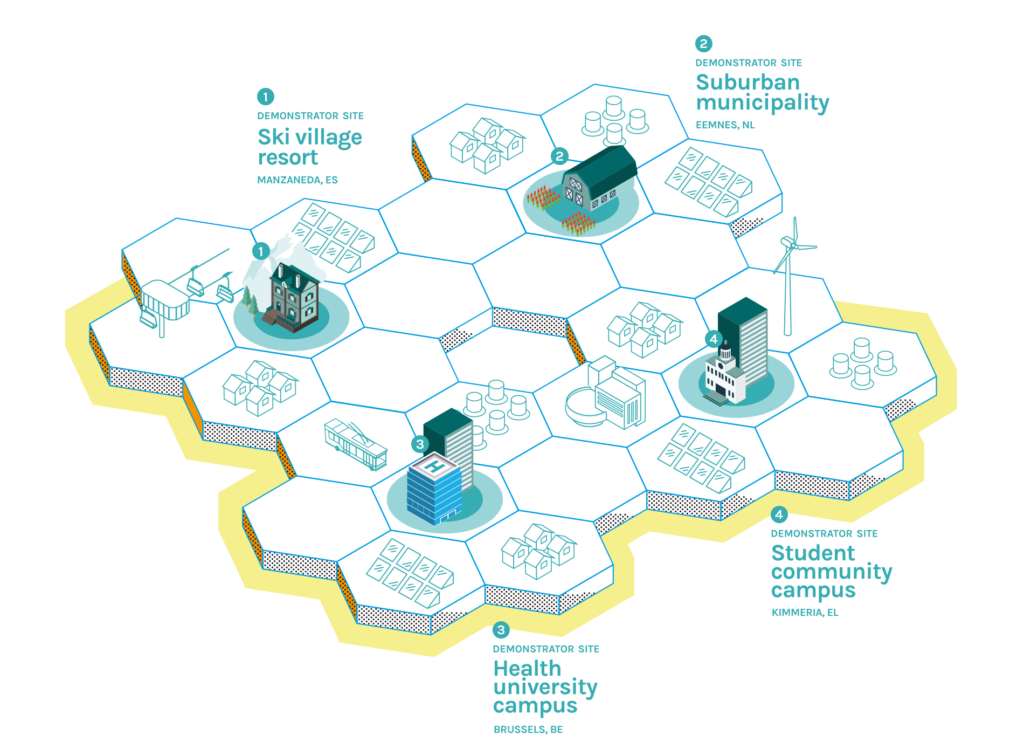
One of the Reinaissance objectives is that of demonstrating the replicability potential of its comprehensive approach. Consequently, several sites around the globe have been contacted and involved to test our tools. As a simulation exercise, in this article, we explore consumption and emission data from a hypothetical middle-sized airport located in western Europe, thanks to the direct link with another Horizon 2020 project – ClimOP.
ClimOP is dedicated to reducing the climate impact of the aviation industry. Air and ground operations are assessed and optimized to reduce their environmental footprint. In this article, the benefits for a middle-sized airport in Europe of upgrading to a fully electric fleet will be analyzed.
Electrification of Ground Operations Preliminary Analysis
The ground fleet of a middle-sized airport typically includes several hundred personnel cars, medium-sized vans, passenger buses, and specialized vehicles for specific operations such as baggage carriers, food carriers, tanks, etc. Considering the average use and fuel consumption of these vehicles, it is possible to estimate the average annual emissions of GHG from the ground support equipment and operations (GO) fleet. For simplification and future scalability, in the ClimOP study, the GO fleet was divided into 3 categories of vehicles: small cars, large cars/vans, and trucks. To assign a consumption approximation within each category, an average was taken which included every type of vehicle within each category. Yearly GHG emissions for the GO fleet at a medium-sized airport approximate to 30.000 T/year. To be able to compare this value to the GHG emissions of generating enough electricity to power the electric equivalent fleet, a synthetic fleet was devised using electric equivalents for the existing vehicles. Electric vehicles produce 0 GHG emissions while running; however, the electricity used to power them does cost GHG emissions to generate. Comparing the values, we can see that in the worst-case scenario (energy generated 100% from coal source) a total of 700 yearly tonnes of GHG could be spared. If all energy used were gas-sourced, GHG emissions would be reduced by at least 2500 T/year.
What if energy was sourced locally from 100% renewables, by an energy community collectively producing and sharing electricity on the grid in a self-consumption scheme?
This is exactly what the RENAISSANCE project would like to assess in different sites across the globe, during its final replication phase, in order to validate the scalability of its approach.
A peer-2-peer renewable Energy Community Network in a medium-sized airport
As background references, RENAISSANCE will draw from the existing business models realized in two of its European pilot sites that can be an initial input for local energy communities involving airports: the Manzaneda Ski Resort in Galicia (Spain) and the Brussels Health Campus in Jette (Belgium).
Manzaneda is a municipality in the eastern province of Ourense, in the Galicia region of northwest Spain. The site is a remote rural village and ski resort with residential properties and various commercial establishments. The resort hosts over 100.000 visitors per year and is home to around 900 permanent inhabitants. The energy community of Manzaneda is formed by different consumption units and owns a large number of photovoltaic panels that generate 80 kWp. The current market structure is a traditional energy market where the local DSO Electromanzaneda is also the grid owner and its objective is that of increasing self-consumption to the maximum, to store energy thanks to the e-vehicles fleet batteries, and to sell the extra energy to the main grid.

The Brussels Health Campus hosts the university Hospital (Universitair Ziekenhuis Brussel UZB-VUB) and the Vrije Universiteit Brussel Student Campus (VUB). The hospital is a well-advanced energy island owning and running a state-of-the-art microgrid that can work in island mode for five (5) consecutive days. It includes a thermal and electricity grid, wastewater recovery, and a high-speed glass-fibre telecom network. Energy production and storage include photovoltaics, 3 emergency generators, and a total capacity of 2,5 MWh in battery storage, mainly under the form of UPS. The microgrid serves the hospital complex, 250 student dwellings, the faculty of health sciences, a primary school, and a fitness centre.
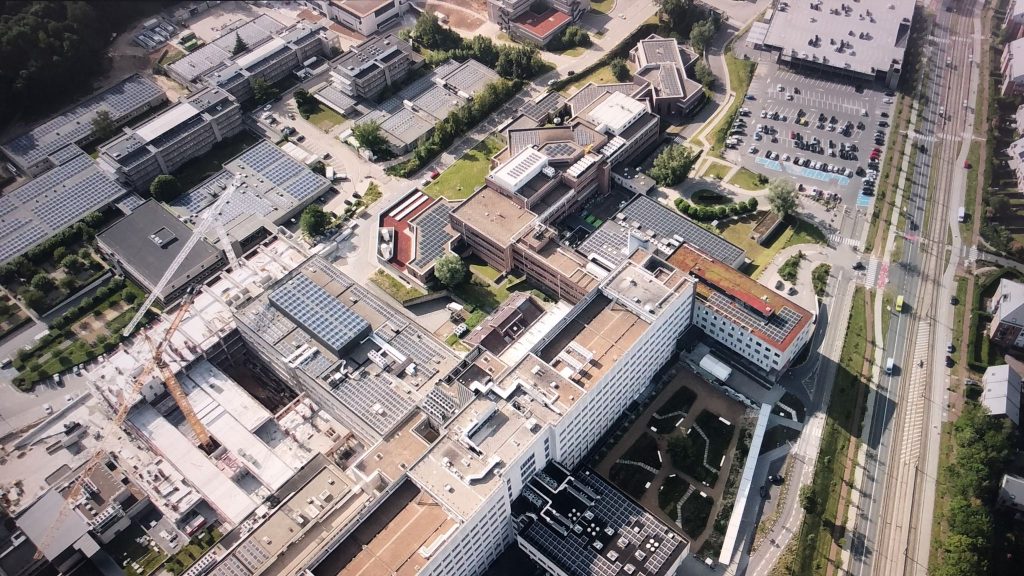
Both sites own a massive amount of PV panels that help cover consumption needs and collect the surplus energy produced in storage facilities. When the self-consumption is covered by the local production, the surplus energy is traded with other peers on the network or sold to the main grid. Inside a local energy community, the surplus produced by individual network peers is traded with other members of the network at a lower price compared to their usual energy retailer’s price than if it was sold directly by smaller individual producers (aggregated offer), thanks to the lower distribution cost and tax exemptions granted to REC legal entities. In Manzaneda and Brussels, the members of the newly established community network are the local DSOs, the Ski Resort and Hospital facility managers, the local tourism office representatives, representatives of students and employees. In the context of our simulation of an Energy Community involving a medium-sized airport in Europe, such peers could be tertiary, industrial, and residential consumers settled in the same area or consumers from the surrounding areas.
More specifically, in this scenario, the medium-sized airport uses the energy produced by PV panels of other members without the need to install new PV panels, which would mean monetary savings against a very low investment. On the other hand, by participating in the local EC, the airport would maintain a high level of decisional power on its energy consumption, enhanced by the use of the large amount of storage capacity stored by the electrified ground fleet (vehicle to the grid – V2G), which also increases the stability of the network at large. Furthermore, the participation of different stakeholders in the EC would contribute to the overall resilience both in terms of energy output and social benefits. Such an amount of self-produced renewable energy ensures a higher stability in case of adverse events affecting the main energy network and increases backup capacity in case of blackouts or shortages. This model is conceptualized for both the Manzaneda ski resort and the Brussels Health Campus and it could be applied, with the due changes, to medium-sized airports as well, given some critical common elements between the three:
- The Manzaneda ski resort necessitates high energy demands (resulting in high peaks) for the snow cannons and the cableways. These consumption schemes can be compared to those of an airport’s ground operation fleet charging needs, in particular, heavy vehicles (trucks). At the same time such vehicles can be considered as storage assets (V2G);
- The Brussels Health Campus represents a critical infrastructure that needs to run even in drastic circumstances and can work in island mode for five (5) consecutive days. This can be also the case for those airport facilities that may need to run essential operations such as fast-charge of safety vehicles or emergency assets related to increased safety and security of the network in case of adverse events or shortages.
Conclusions and ambition
The creation of an innovative local energy community would mean the emergence of small and medium-sized airports as critical actors in supporting the growing field of local energy communities and promoting the energy transition, also creating a positive impact on the environment by massively reducing the aviation domain’s CO2 emissions. Moreover, establishing the first European energy community located in an airport would result in a great return of image and higher trust from both investors and customers.
Thanks to the cross-exchange between experts from both projects, Renaissance and Clim-OP, we could identify an essential opportunity for the aviation domain stakeholders to meet the SDG goals and, more at large, the Paris agreement towards climate targets. Such opportunity does not only increase airport operations decarbonization potential, but it also creates an emerging win-win framework of several attractive new business models for all actors involved.
Read the original article on Deep Blue Italy’s website:
Follow us:
